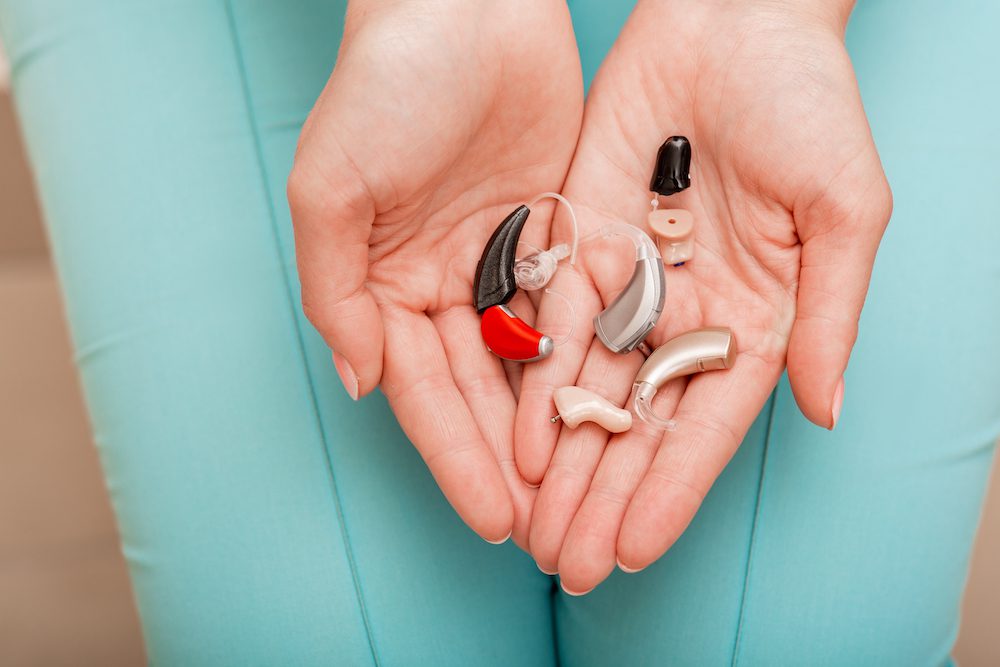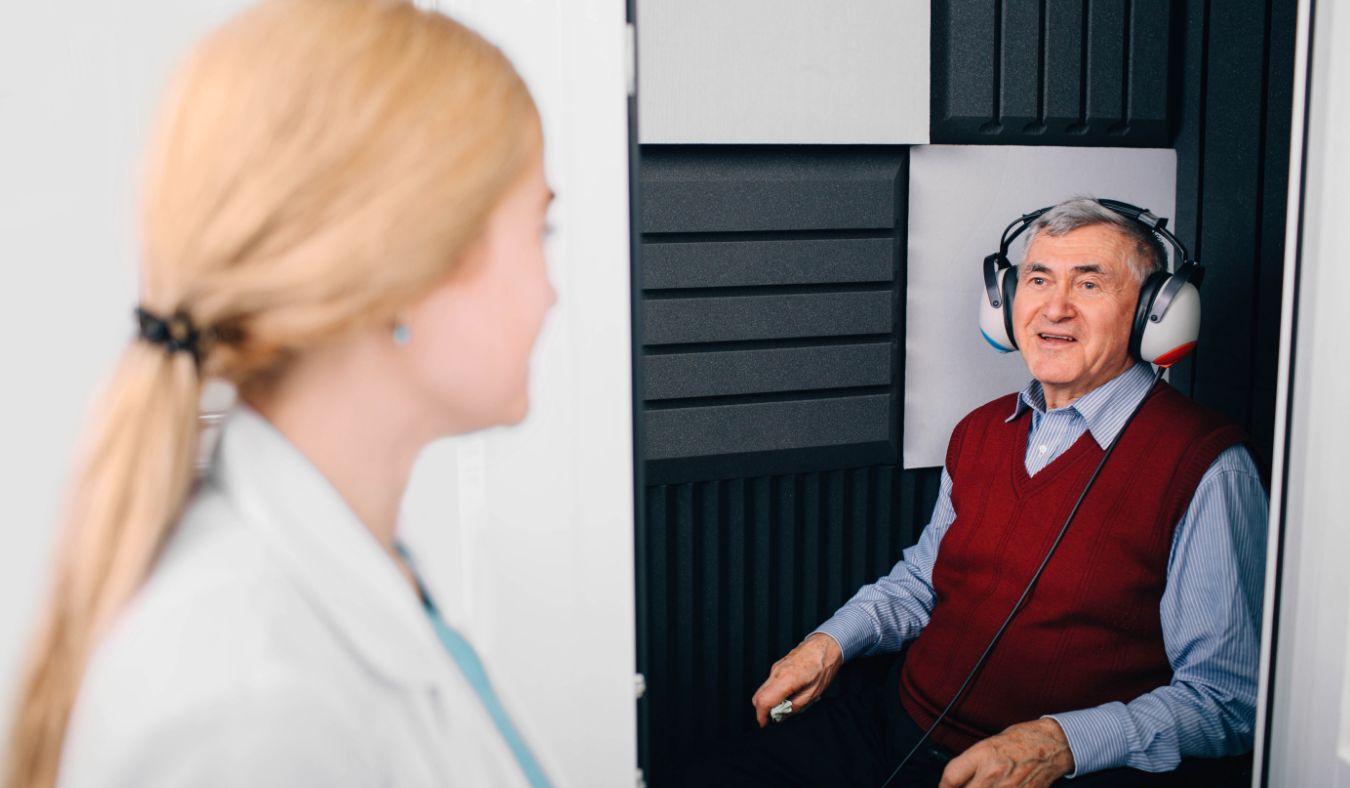How to Identify and Avoid Ototoxic Medications
When we think about threats to our hearing health, loud concerts or aging

By: admin | March 28, 2024
Hearing aids have come a long way over the years. This isn’t just about technology; it’s about understanding your needs better and making life with hearing loss easier and more fulfilling. The history of these beneficial devices can offer you valuable insights into how far experts have come in addressing hearing loss and where these devices might be heading next. Understanding this progression can help you appreciate the sophisticated tools available today for managing your hearing loss. Let’s look at how hearing aids have evolved over time.
You might feel overwhelmed by the vast array of hearing aids available today. Understanding the history and evolution of these devices can give you a clearer picture of their purpose and function.
Think of hearing aids like cars. In the early days, cars were simple machines with few features – they got you from point A to point B, but not much else. Similarly, the earliest hearing aids were basic sound amplifiers. But just as cars have evolved into high-tech vehicles with GPS, Bluetooth and other advanced features, so too have hearing aids transformed into sophisticated devices that do more than just amplify sound – they enhance your overall quality of life.
The shift from basic ear trumpets to more practical ear horns marked a significant change in the design of hearing aids. Ear trumpets were made from several different materials like metal or wood. Ear trumpets were large and amplified sounds for individuals that experienced hearing loss but had limitations as they were not easily portable.
Ear horns, which were smaller and more effective than their predecessors, became popular during the 18th and 19th centuries. They were designed to collect sound waves and funnel them into your ear, improving your ability to hear conversations and ambient sounds. These devices were easier to carry for individuals. Despite their simplicity, these devices represented a major advancement in hearing aid technology at the time.
As a result of the ear trumpets and ear horns, they evolved into vacuum tubes. These tiny components revolutionized electronic devices, and hearing aids were no exception. Vacuum tubes allowed for greater amplification and improved sound quality, making these devices even more effective for you.
Incorporating vacuum tubes into hearing aids wasn’t a simple task. It required careful design and precision to ensure the device remained compact while still providing superior sound amplification. The result was a device that was more powerful and versatile than ever before.
Here are the benefits of vacuum tube hearing aids:
This milestone marked another step forward in the evolution of hearing aids towards modern devices, showing how technology can enhance your life in meaningful ways.
After vacuum tubes, transistor hearing aids opened new doors for individuals experiencing hearing loss. Transistors marked a significant turning point in the hearing aid industry. These tiny electronic components forever changed the landscape of hearing aids, paving the way for smaller, and more efficient allowing for a reduction in size and power consumption allowing individuals to wear them for longer.
Transistors revolutionized hearing aids by replacing bulky vacuum tubes with compact, energy-efficient components. This not only made these devices more portable but also extended their battery life, enhancing your convenience and comfort. The transition from vacuum tubes to transistors in electronic devices posed several significant challenges. One of the primary hurdles was the miniaturization of components while maintaining or improving performance. Vacuum tubes were large and required substantial power, whereas transistors needed to replicate or exceed their functionality in a much smaller size and with lower power consumption.
Here are some common questions about this era:
With vacuum tubes and transistors using electricity, it paved the way for hearing aids to be more specific to the needs of an individual experiencing hearing loss. The 20th century brought a groundbreaking development that forever changed the landscape of hearing aids: the introduction of electricity. This was a pivotal moment that transformed these devices from simple sound funnels into sophisticated pieces of technology.
Electricity allowed for the creation of electronic hearing aids, which were capable of not just amplifying sound, but also adjusting it to suit your specific needs. This meant that you could now have a device tailored to your unique hearing loss profile, making communication and interaction much more effortless.
In addition to electricity, another closely related topic is the invention of batteries. Without portable power sources like batteries, electronic hearing aids would not be as convenient or efficient as they are today. Batteries enabled these devices to become smaller and more portable, opening up a whole new world of possibilities for their design and functionality.
The transition from hearing aids using electricity to digital advancements in hearing aids has evolved in several ways. Digital technology has profoundly transformed the landscape of hearing aid advancements. The integration of digital technology in hearing aids revolutionized signal processing, allowing for highly customizable and precise sound amplification tailored to individual hearing needs. These devices utilize refined processes to distinguish speech from background noise, significantly improving speech clarity and comprehension in various environments. Additionally, digital technology enabled the development of smaller, more discreet hearing aids that offer enhanced connectivity to smartphones, enabling wearers to stream audio directly to their devices.
The advent of digital technology in hearing aids also facilitated the creation of telehealth services, enabling remote adjustments and consultations, thereby increasing accessibility to hearing care for individuals in remote areas.
With digital technology, hearing aids have become incredibly sophisticated. They can now filter out background noise, connect to your smartphone or TV and even track your physical activity. Overall, digital technology has propelled hearing aid advancements, offering wearers greater comfort, functionality and a better quality of life.
In the most recent chapter of hearing aid evolution, there has been two major breakthroughs: invisible designs and wireless connectivity. Invisible hearing aids are a game-changer for those who value discretion. These devices fit snugly inside your ear canal, making them virtually undetectable to others. While these offer a discreet look these might not be suitable for every individual. Talking with a professional about the specific hearing aids you want, will aid in choosing the right device for you.
Wireless connectivity, on the other hand, has taken convenience to a whole new level. With this feature, you can connect your hearing aids directly to your smartphone or other devices. This means you can stream music, take calls and even adjust your hearing aid settings right from your phone!
These modern breakthroughs are more than just cool features – they’re tools that can significantly improve your day-to-day life with hearing loss. So why not explore what these advancements can do for you? Reach out to our clinic today and discover how the latest in hearing aid technology can enhance your listening experience!
With the many advancements in technology artificial intelligence is the latest advancement in many industries, and the hearing aid industry is no exception. AI has opened up new possibilities for hearing aids, making them smarter and more intuitive than ever before. AI-powered hearing aids can learn and adapt to your listening preferences over time. They can automatically adjust their settings based on the environment you’re in, whether it’s a quiet room or a noisy restaurant. Some AI hearing aids can even detect falls and send alerts to emergency contacts, providing an added layer of safety for you.
The integration of AI into hearing aids is a testament to how far these devices have come. It’s not just about amplifying sound anymore – it’s about providing a personalized and seamless listening experience for you.
The advancements that hearing aids have made is incredible, from having AI to wireless connectivity, but hearing aids will continue to evolve in the future. With advancements in technology, we can expect these devices to become even more sophisticated and intuitive. One promising area of development is the integration of hearing aids with other health monitoring devices. This could allow your hearing aids to track vital signs like heart rate and body temperature, providing a more holistic view of your health.
Another exciting prospect is the use of gene therapy to treat hearing loss. While this is still in the early stages of research, it could potentially revolutionize the way we manage hearing loss in the future.
Understanding the history and the advancement of hearing aids can provide a unique perspective when choosing the right device for you. As seen, these devices have evolved from simple sound amplifiers to high-tech tools that enhance your overall quality of life. This evolution is a testament to the relentless pursuit of better solutions for managing hearing loss. There are various styles of hearing aids you can choose from now, like in the ear (ITE), behind the ear (BTE), in the canal (ITC), completely in canal (CIC) and invisible in canal. While there are a multitude of styles, you will need one that meets your specific requirements, lifestyle and preference.
To make your decision easier, consider this checklist based on historical advancements:
By understanding how far hearing aids have come in the development of these helpful tools, you can better appreciate the sophisticated options available today and make an informed choice that best suits your needs and lifestyle. Remember, choosing a hearing aid is not just about improving your ability to hear – it’s about enhancing your overall quality of life!
An estimated 20% of adults aged 65 or older have some form of hearing loss. This statistic emphasizes the importance of continuous advancements in hearing aid technology throughout history. As hearing aids continue to evolve in various ways, you’ll see how these developments have made life easier for individuals living with hearing loss.
Using this advice and looking at the evolution of hearing aids has been enlightening. It’s clear that these devices have come a long way, from simple sound amplifiers to high-tech tools that not only improve your hearing but also enhance your overall quality of life. As technology continues to advance, we can expect even more exciting developments in the future.
If you’re considering a hearing aid or if you have any questions about the latest advancements in hearing aid technology, don’t hesitate to reach out. At Coastal Hearing Clinic, we’re dedicated to helping you understand your options and find the best solution for your needs. We invite you to contact us at our Sandwich, MA location using the phone number (774) 445-6655 for more information.
Taking care of your hearing health is an important part of maintaining a good quality of life. So why wait? Discover how modern hearing aids can make a difference in your life today!
Tags: hearing aid basics

When we think about threats to our hearing health, loud concerts or aging
By: admin | April 24, 2025

Have you ever noticed how your ears do more than just help you hear?
By: admin | March 21, 2025

Managing hearing loss is a personal experience that can be significantly
By: admin | November 28, 2024
